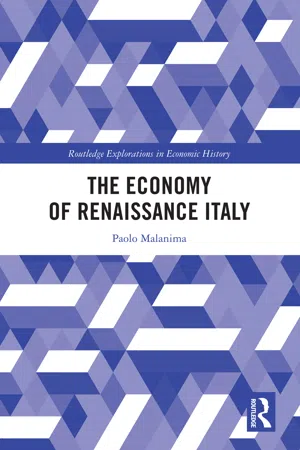1.1.1 The plague
The twelve galleys coming from the Genoese trade outpost of Caffa, today’s Feodosija, on the Black Sea, were headed to Genoa. They stopped in Constantinople and Pera (Galata) in the autumn of 1347, and an unknown epidemic began to spread in the cities of the Middle East. The galleys reached the port of Messina in October 1347. According to the Franciscan monk Michele da Piazza, the mariners brought with them “a plague down to the very marrow of their bones. As soon as people spoke to them, they were infected with a mortal sickness which brought on an immediate death that they could in no way avoid” (Corradi 1865–67: I, 193; translated in Aberth 2005: 3). After Sicily, the galleys crossed over to Sardinia and spread the contagion into the island (Cesana et al. 2017: 16). Early in January 1348, two of the twelve Genoese ships docked in the port of Pisa, a few kilometres from the city centre. The mariners, who had just landed, went to the town marketplace. A chronicler wrote that as soon as those mariners spoke to people, they fell ill and suddenly died. “Panic gripped the city’s inhabitants” (“fu sparto lo grande furore per tucta la cictà di Pisa”). In a matter of months – the chronicler adds with some exaggeration – four out of five people died (Sardo 1963: 96).
It is a short distance from Pisa to Florence. It seems that in Florence the first cases of plague occurred in March 1348. From Pisa, Florence, and other nearby Tuscan cities, the infection spread at the velocity of one kilometre per day. According to the chronicler Giovanni Sercambi from Lucca, in Tuscany the mortality was so high that “people thought that the end of the world had come” (Sercambi 1892: I, 96). At the same time, the plague reached the Adriatic Sea and struck Venice. From Venice, Florence, and later Genoa, the infection progressed into the Po Valley and then to beyond the Alps (Cesana et al. 2017). In Italy, the contagion reached Bologna and Modena in March; Perugia and Padua in April; Orvieto, Ancona, Rimini, and Naples in May (Del Panta 1986: 112–13). In Bologna an “infinite mortality” occurred “the likes of which has never been seen on earth” (cited in Kelly Wray 2009: 1). Milan did not escape the infection. The mortality rate in the city was, however, certainly lower than elsewhere in Italy (Cipolla 1957a: 339). A chronicler reported the number of deaths: more than 8,000 (Corradi 1865: I, 199); a very low figure, if correct, on the urban population of 150,000 inhabitants. Yet, Milan was not spared from the following waves of the contagion. It was severely hit in 1360–61 (Carmichael 1991).
When the Black Death broke out in Europe in 1347–48, the plague had seemingly disappeared many centuries prior. A first plague pandemic had already occurred in the continent and in Asia in 541–49. “It began in Egypt, spread throughout the whole universe, lasted 52 years and was disseminated by daemons, human in appearance”: as it was written more than a millennium later, in 1634 (Rondinelli 1634: 12). The second plague pandemic, beginning in 1347–51, was a catastrophic event and struck the European population heavily until the first two decades of the eighteenth century, when it disappeared from the continent (Herlihy 1997). Francesco Petrarca, who lost his beloved Laura on 6 April 1348, expressed well the desolation that followed the appearanc...
